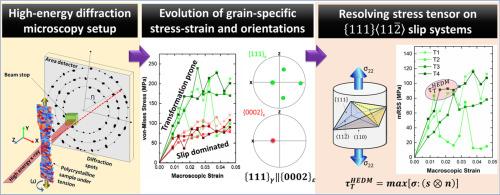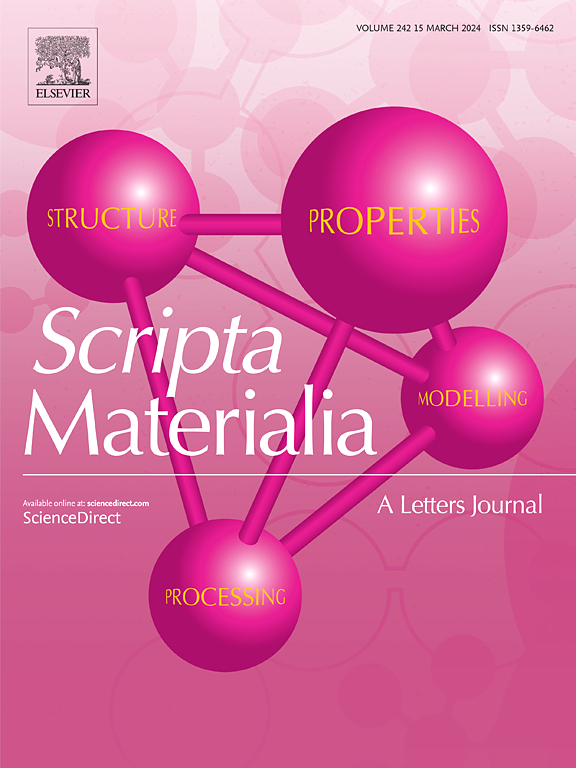应变诱导相变临界分解剪应力的实验测定
IF 5.6
2区 材料科学
Q2 MATERIALS SCIENCE, MULTIDISCIPLINARY
引用次数: 0
摘要
目前的研究报告首次尝试使用高能衍射显微镜(HEDM)测量三维多晶聚集体中引发应变诱导相变的临界分解剪切应力。对Fe38.5Mn20Co20Cr15Si5Cu1.5亚稳合金进行了原位拉伸试验,该合金具有相变诱发塑性(TRIP)。利用HEDM对应变诱导相变倾向较高的晶粒进行了跟踪。晶粒比应力的急剧下降,与相对于母相γ-fcc取向的新的ε-hcp晶粒的出现一致,被认为是触发相变所需的晶粒比应力的证据。确定了势相变体系的最高分辨剪切应力为应变诱导相变的临界分辨剪切应力(CRSS)。对于所研究的亚稳合金,测定的相变CRSS为86±3 MPa,与采用施密德因子测定的理论CRSS值(89±12 MPa)非常接近,而采用泰勒因子测定的CRSS值为62±7 MPa。本文章由计算机程序翻译,如有差异,请以英文原文为准。

Experimental determination of critical resolved shear stress for strain-induced phase transformation
The current investigation reports the first attempt to measure the critical resolved shear stress to initiates strain-induced phase transformation in a three-dimensional polycrystalline aggregate using high-energy diffraction microscopy (HEDM). In situ tensile testing was performed on a Fe38.5Mn20Co20Cr15Si5Cu1.5 metastable alloy exhibiting transformation-induced plasticity (TRIP). Grains with a higher propensity for strain-induced phase transformation were tracked using HEDM. A sharp drop in grain specific stress, coinciding with the appearance of a new ε-hcp grain oriented relative to the parent γ-fcc phase, was taken as evidence of grain-specific stress required to trigger phase transformation. The highest resolved shear stress on the potential transformation systems was identified as the critical resolved shear stress (CRSS) for strain-induced phase transformation. For the studied metastable alloy, CRSS for transformation was determined to be 86±3 MPa which was very close to theoretical CRSS value determined using Schmid factor (89±12 MPa) compared to the value determined using Taylor factor (62±7 MPa).
求助全文
通过发布文献求助,成功后即可免费获取论文全文。
去求助
来源期刊

Scripta Materialia
工程技术-材料科学:综合
CiteScore
11.40
自引率
5.00%
发文量
581
审稿时长
34 days
期刊介绍:
Scripta Materialia is a LETTERS journal of Acta Materialia, providing a forum for the rapid publication of short communications on the relationship between the structure and the properties of inorganic materials. The emphasis is on originality rather than incremental research. Short reports on the development of materials with novel or substantially improved properties are also welcomed. Emphasis is on either the functional or mechanical behavior of metals, ceramics and semiconductors at all length scales.
 求助内容:
求助内容: 应助结果提醒方式:
应助结果提醒方式:


